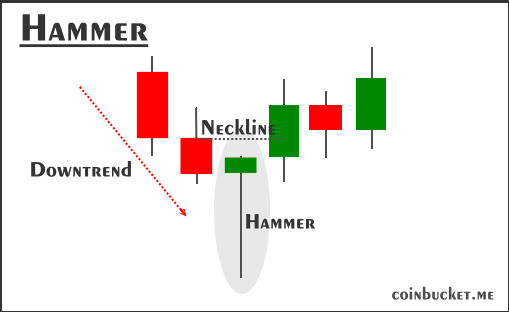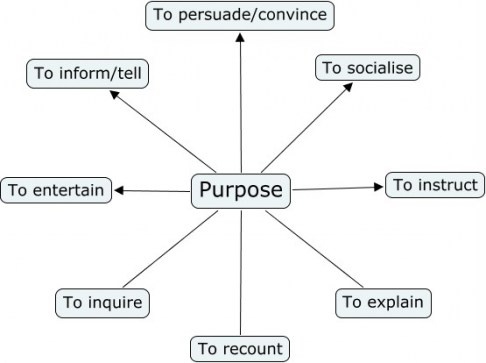Capital Appreciation: Meaning, Types and Examples
This post was written by Kenon Thompson on August 11, 2021

Appreciation is one of the major metrics of your portfolio’s success. This is a simple way of looking at portfolio performance and how appreciation factors in, of course, but it’s a fundamental way to approach your investment decisions at a high level. Even if you don’t dive into the details of appreciation rates for your investments, it’s helpful to have a sense of what to expect if you include them in your portfolio. The better you can anticipate asset appreciation, the better you can forecast what your investments will do for you. Appreciating assets are assets that are typically held for more than one year because they are known to increase over time.
It is important to note the difference between capital appreciation and capital gains. By following these tips, you can increase your chances of achieving your investment goals through capital appreciation. In stock valuation, capital appreciation typically refers to the growth in the principal amount invested. Capital appreciation refers to an increase in the market value of an asset. This occurs when the market price for an asset is higher than what the investor originally paid for. The assumption is that, by the time the bond matures, the district’s tax base will have expanded enough to allow it to pay the lump sum of principal and interest.

It is how much the value of an investment has increased compared to its original value used for tax purposes (this is called a “cost basis”). Your total capital appreciation is, then, the amount of money you would pay taxes on if you sold the asset today. Capital appreciation only refers to changes in an investment’s price. Most notably, appreciation does not account for any income generated by an asset, such as dividends or interest payments. You can measure an asset’s capital appreciation by the difference between its current price and its purchase price.
Capital Appreciation vs. Capital Gain
In investing parlance, appreciation is the increase in an asset’s value over time. For example, a certificate of deposit (CD) offers interest over time. This is reflected as a percentage of the money you put into the CD, and gets paid out with the original amount you put into the CD when the account matures. If you buy a stock at a $15 share price and its share price increases to $20, your investment has appreciated by $5. In this example the amount of appreciation depends on when you sell the asset, since share prices fluctuate.

Numerous capital appreciation funds are available across the investment market. BlackRock’s Capital Appreciation Fund offers management from one of the largest investment managers in the world. When properly used, CABs can provide funding for local governments that are growing rapidly — those that know capital appreciation meaning their tax bases will increase, thus allowing them to handle greater future costs. CABs can be a very expensive form of borrowing, however, leaving large debts to accrue in the decades to come. Both the risks and advantages of CABs should be considered when determining the best option for funding.
Many people try speculating in the stock market with the goal of getting rich, and the vast majority fail at doing so. If you want to try your hand, make sure you are using money you can afford to lose, without putting your livelihood or retirement funds at risk. It’s easy to get a false sense of confidence after initial success, so thoroughly understand the real possibilities of losing your investment. If you use the capital appreciation strategy, you are not too concerned with day-to-day fluctuations. However, keep a close eye on the fundamentals of the company for changes that could affect long-term growth.
Whatever the reason, the owner of the asset in question will be showing a capital gain on their acquisition. Ahead of this being written into the company’s accounts and so becoming public knowledge, the gain could make the company a target for takeover by asset strippers. Appreciation is basically when an asset gains in value over time. The asset in question can be a share, bond or commodity or it can be a physical asset such as real estate.
Limits on CABs
Bonds issued by states, cities, counties and
other governmental entities are collectively
called municipal bonds. Most municipal bonds pay
interest on a semiannual basis, at the same rate
over their entire term. They usually offer
investors income that is exempt from federal
income taxes. It is also important to remember that capital appreciation is not the only goal of investing. Other important goals include income generation and preservation of capital. When investing for capital appreciation, it is important to balance the desire for growth with the need to protect your investment from losses.
- As a result, capital appreciation funds are considered most appropriate for risk-tolerant investors.
- To understand the difference between traditional bonds and CABs, consider a district seeking $100 million with a 30-year maturity and a 3 percent interest rate.
- The assumption is that, by the time the bond matures, the district’s tax base will have expanded enough to allow it to pay the lump sum of principal and interest.
- Options strategies like covered calls have income objectives built around large, long-term stock positions.
Farmland prices have risen per decade and continue to show signs of growth. This means your investment in farmland is likely well-suited to grow in value over time. How, when, and why assets appreciate (or depreciate), however, differs across the board, meaning each has its own impact on your portfolio. Here’s what you need to know about appreciation, capital gains, and the best investments for appreciation over time.
Asset
The difference between more traditional bonds
and CABs primarily concerns the timing of interest
repayment. With a conventional bond, the issuer
pays accrued interest on the principal in
installments until the debt is retired. With a
capital appreciation bond, interest payments are
not required for the duration of the bond. At
maturity, the issuer must pay the entire principal
plus years of compounded interest. The avoidance of
interest payments until maturity thus results in
much higher interest costs. To understand the difference between traditional bonds and CABs, consider a district seeking $100 million with a 30-year maturity and a 3 percent interest rate.

If an investor buys a stock for $10 per share, for example, and the stock price rises to $12, the investor has earned $2 in capital appreciation. When the investor sells the stock, the $2 earned becomes a capital gain. Other assets increase in value steadily over a longer period of time. These investments serve as a hedge against stock market volatility and can generate returns consistently. If you own any investments, capital appreciation is probably your goal. Capital appreciation occurs when an investment asset gains value as reflected by its market price.
Understanding Capital Appreciation
When investing for capital appreciation, it is important to choose investments that are appropriate for your risk tolerance and investment goals. If you are not comfortable with risk, you may want to consider investing in assets that are less likely to fluctuate in value, such as bonds or real estate. However, if you are willing to take on more risk, you may be able to achieve higher returns by investing in assets that have the potential for greater capital appreciation, such as stocks. If you’re investing for short-term returns, you’ll want to consider assets that appreciate quickly. If you’re more interested in a long-term investment, you may want to opt for a steadily appreciating asset to help you generate the returns you’re looking for.
Capital appreciation funds are a good option for investors willing to take on some additional risks for the potential benefit of above-average market returns. Investment strategies can range broadly across the fund category; however, most funds are primarily invested in a mix of value and aggressive growth stocks. These funds are generally more moderate in their investment holdings than aggressive growth stock funds, investing for both long- and short-term gains with growth and value. These funds can be a good fit for moderate investors seeking equity market allocations since they usually invest from a broad market equity universe. They can also provide consistent exposure to the equity markets with steady capital appreciation over time. Therefore, they can be a good long-term core holding for a moderate-to-aggressive portion of an investment portfolio.
What is capital appreciation? Definition and examples
For Forney ISD — and many other Texas school districts experiencing similarly rapid enrollment growth — coping with the influx of new students is difficult at best. That’s because they have many years to recover from any losses that may occur due to market changes or downturns. When it comes to investing, there are four main investment objectives that cover how you accomplish most financial goals. While certain products and methods may work for one objective, they may produce poor results for the others.
- In this case it’s possible to pay a different price than the current market value, leading to different capital appreciation calculations.
- The value of real estate such as a house can increase because of proximity to new developments such as schools or shopping centers.
- Numerous capital appreciation funds are available across the investment market.
- The value of shares and ETFs bought through a share dealing account can fall as well as rise, which could mean getting back less than you originally put in.
- BlackRock’s Capital Appreciation Fund offers management from one of the largest investment managers in the world.
Capital gains refers to the amount of money you’ve made on an investment that you’ve withdrawn from. If you sell a stock worth $20 per share that you bought for $10 a share a year ago, you’ve made $10 in capital gains. Depending on what you do with the money, you may have to pay income tax on capital gains, since the value of your investment turned into cash.
Appreciation can be caused by a number of factors, like economic growth or changes in interest rates. If a company’s growth is faster than that of similar companies or at a quicker rate than expected, then stock prices can increase and lead to appreciation as well. In most situations all three of these formats will lead to the same results. For example, it’s possible to buy a piece of property for a different price than its assessed tax value. Or you might buy a security in a direct transaction, rather than through a centralized market like the New York Stock Exchange. In this case it’s possible to pay a different price than the current market value, leading to different capital appreciation calculations.
Horizon Technology Finance Announces Monthly Distributions for … – PR Newswire
Horizon Technology Finance Announces Monthly Distributions for ….
Posted: Tue, 01 Aug 2023 20:20:00 GMT [source]
Appreciation is the unrealized value that your investment has accrued. It is the amount that your investment has grown in value while you are holding it. Gordon Scott has been an active investor and technical analyst or 20+ years.
TweetThis entry was posted on Wednesday, August 11th, 2021 at 1:08 am and is filed under Uncategorized. You can follow any responses to this entry through the RSS 2.0 feed. You can leave a response, or trackback from your own site.